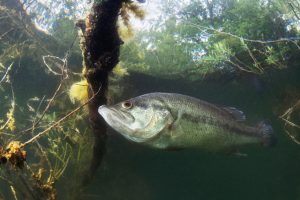This blog post was written by Vinícius Londe, a post-doctoral researcher at the UF/IFAS Center for Aquatic and Invasive Plants.
I grew up in a small city in the countryside of Minas Gerais State, Brazil, and my research interests have their roots there. My grandmothers lived on small farms along a river, where I spent most of my childhood. I used to play near the water during my frequent visits to my grandmothers’ homes. Years later, I stopped near the riverbank and observed the water carefully. There were small, long-bodied invertebrates and almost no other living organisms. This change in the aquatic environment that meant so much to me as a child motivated me to pursue a career in science. I wanted to learn more about ecological indicators and how to use them to monitor ecosystem health.
I used a set of ecological indicators in my thesis and dissertation to monitor the success of forest restoration. In 2015, I began working with large datasets and answering large-scale questions. The skills I developed since then opened the doors to a job in another country, and here I am, working with large datasets from the long-term monitoring of lakes in Florida.
The current project
Invasive aquatic plants are a major problem in Florida’s lakes and rivers. Approximately $20 million is spent each year controlling the populations of invasive plants in Florida, especially hydrilla, water hyacinth, and water lettuce. Such control is mainly achieved by applying herbicides that have been explicitly developed to kill invasive plant species. However, as people widely use Florida’s lakes and rivers, there is legitimate concern about managing invasive plants with herbicides. An ongoing project led by the CAIP in partnership with the Florida Fish and Wildlife Conservation Commission (FWC) and LAKEWATCH and financed by the US Army Corps of Engineers is compiling long-term monitoring data to address this concern.

FWC and LAKEWATCH have collected plant, fish, and water quality data since the ’90s. My role in the project is to merge these different datasets, analyze the data using robust statistics, and extract conceptual and practical results. My first task was to verify whether and how the cover of invasive plants affected fish populations. In the last few months, I have analyzed data from 33 lakes to check the effects of plants on the entire fish community, that is, all fish species collected in those lakes. We are also interested in the impact of plants on specific fish groups, such as sports and non-native fish. As sporting fish are very important in Florida and the US, we also dedicate a research line focused on the largemouth bass population. In this case, data from 39 lakes have been analyzed.
Results so far…
We already have some interesting results to share, which will be done in the following months. Also, our next step is to verify whether and how using herbicides to manage invasive plants affects fish populations over the long term. Thus, stay tuned to the blog and, of course, feel free to contact us.
This blog post was written by Vinícius Londe, a post-doctoral researcher at the UF/IFAS Center for Aquatic and Invasive Plants. This post features research and information from a current project he is analyzing at the Center. Questions or comments can be sent to the UF/IFAS CAIP communications manager at caip@ifas.ufl.edu. Follow UF/IFAS CAIP on Instagram, Facebook, and Twitter. Subscribe for more blogs like this one.
UF/IFAS Center for Aquatic and Invasive Plants. Turning Science Into Solutions.
Did you find this post helpful? Click the heart below!
 5
5
